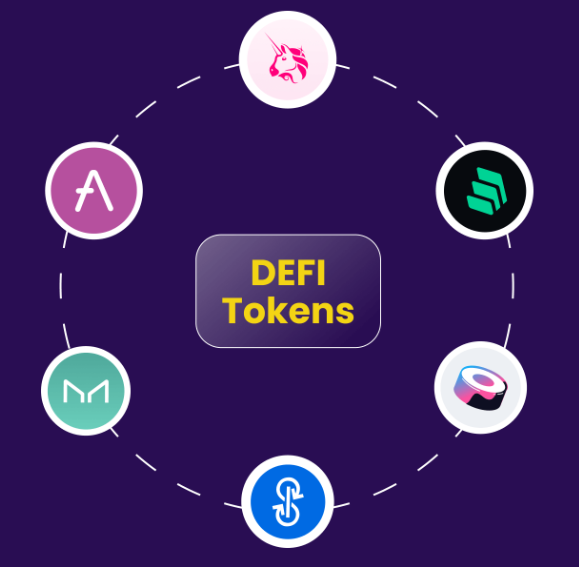bbc.towzdog.com – Aave vs Compound Comparison: Which DeFi Lending Protocol is Right for You? In the rapidly evolving world of decentralized finance (DeFi), lending protocols have emerged as vital components of the ecosystem. Among the most prominent are Aave and Compound, both of which allow users to lend and borrow cryptocurrencies in a decentralized manner. But how do these two platforms compare? In this article, we will explore the key features, benefits, risks, and current data surrounding Aave vs Compound, helping you make an informed decision.
What Are Aave and Compound?
Understanding Aave
Aave is an open-source DeFi protocol that allows users to lend and borrow a variety of cryptocurrencies. Launched in 2020, Aave has quickly gained popularity for its innovative features, such as flash loans and rate switching. Users can deposit their crypto assets into liquidity pools and earn interest, while borrowers can access loans by providing collateral.
Understanding Compound
Compound, founded in 2017, is another leading DeFi lending protocol. It operates on the Ethereum blockchain and allows users to earn interest on their crypto assets while borrowing against them. Compound uses an algorithmic interest rate model to determine the rates borrowers pay and lenders receive, making it an efficient platform for managing loans.
Key Features of Aave and Compound
1. Interest Rates
Aave’s Variable and Stable Rates
Aave offers users the flexibility to choose between stable and variable interest rates. Stable rates provide predictability for borrowers, while variable rates can fluctuate based on supply and demand dynamics. This feature allows users to optimize their borrowing costs based on market conditions.
Compound’s Algorithmic Rates
Compound employs an algorithmic interest rate model that adjusts rates automatically based on the utilization of the asset. If more users borrow an asset, the interest rate rises, and conversely, if fewer users borrow, the rate decreases. This model incentivizes liquidity and balances the supply and demand for each asset.
2. Collateralization
Aave’s Flexible Collateralization
Aave supports a wide range of collateral types, including various ERC-20 tokens. Users can borrow up to a specific percentage of the value of their collateral, known as the Collateralization Ratio. This flexibility allows users to maximize their borrowing capacity based on their asset holdings.
Compound’s Collateral Requirements
Compound also allows users to borrow against collateral, but it requires users to provide collateral that meets certain criteria. The collateral must be a supported asset on the platform, and users can only borrow a fraction of its value, which varies by asset.
3. Liquidity Pools
Aave’s Liquidity Pools
In Aave, liquidity is provided by users who deposit their assets into pools. Lenders earn interest based on the amount of liquidity they contribute, and borrowers can access these pools for their borrowing needs. Aave’s unique flash loans feature allows users to borrow assets without collateral, provided they repay the loan within the same transaction.
Compound’s cTokens
In Compound, when users deposit assets, they receive cTokens in return. These tokens represent their stake in the liquidity pool and accrue interest over time. Users can redeem their cTokens for the underlying assets at any time, making Compound a straightforward option for earning interest.
4. Governance
Aave’s Governance Model
Aave is governed by its community through a native governance token, AAVE. Token holders can vote on proposals related to protocol upgrades, risk parameters, and other key decisions. This decentralized governance model empowers the community and ensures that the platform evolves according to users’ needs.
Compound’s Governance Framework
Similarly, Compound uses its governance token, COMP, to allow users to participate in the decision-making process. COMP holders can propose and vote on changes to the protocol, making it a community-driven platform that adapts to user feedback.
Benefits of Aave and Compound
1. User Experience
Both Aave and Compound are designed with user experience in mind. They provide intuitive interfaces that make it easy for both new and experienced users to navigate the lending and borrowing processes.
2. Earning Potential
Both platforms allow users to earn interest on their deposits. Depending on market conditions, users can potentially earn higher yields compared to traditional savings accounts.
3. Decentralization
As DeFi protocols, both Aave and Compound are built on blockchain technology, promoting transparency and decentralization. This design reduces reliance on centralized financial institutions and offers users greater control over their assets.
Risks of Aave and Compound
1. Smart Contract Risks
Both platforms operate on smart contracts, which are susceptible to bugs and vulnerabilities. While both Aave and Compound undergo rigorous audits, risks can never be entirely eliminated.
2. Market Volatility
Users are exposed to market volatility, particularly when borrowing against collateral. If the value of the collateral drops significantly, it could lead to liquidation, where the collateral is sold off to cover the loan.
3. Regulatory Risks
As DeFi protocols grow in popularity, they may face increasing scrutiny from regulators. Changes in regulation could impact how these platforms operate and their overall viability.
Current Market Data
As of November 2024, here’s a snapshot of the current market data for both Aave and Compound:
Aave
- Total Value Locked (TVL): Approximately $5 billion.
- Number of Supported Assets: Over 30 cryptocurrencies.
- AAVE Token Price: Around $80.
Compound
- Total Value Locked (TVL): Approximately $3 billion.
- Number of Supported Assets: About 15 cryptocurrencies.
- COMP Token Price: Approximately $50.
These figures illustrate that Aave currently leads in terms of total value locked and the number of supported assets, although both platforms have shown robust growth.
Aave vs Compound: Which One Should You Choose?
1. User Needs
If you prefer flexibility in interest rates and want access to flash loans, Aave may be the better choice. However, if you’re looking for a more straightforward approach with automatic interest rate adjustments, Compound could be more suitable.
2. Asset Availability
Consider the types of assets you wish to lend or borrow. Aave supports a broader range of cryptocurrencies, while Compound focuses on a smaller selection of popular assets.
3. Risk Tolerance
Evaluate your risk tolerance. Both platforms carry smart contract risks, but you may prefer one model over the other based on their collateral requirements and market behavior.
4. Governance Participation
If being involved in governance is important to you, both Aave and Compound offer opportunities through their respective governance tokens (AAVE and COMP). Consider which community aligns better with your values and goals.
Conclusion
In the Aave vs Compound comparison, both platforms offer unique features and benefits that cater to different types of users in the DeFi space. Aave’s flexibility and innovative offerings, such as flash loans, make it an attractive option for those seeking advanced features. On the other hand, Compound’s straightforward approach and algorithmic interest rate model provide a user-friendly experience for beginners.
As the DeFi landscape continues to evolve, it’s essential to stay updated on the latest developments and trends in both platforms. For real-time data and insights, you can visit DeFi Pulse to track the performance and metrics of various DeFi protocols.
Final Thoughts
Ultimately, the choice between Aave and Compound depends on your individual needs and preferences. By understanding the key features, benefits, and risks of each platform, you can make an informed decision that aligns with your financial goals in the exciting world of decentralized finance.




